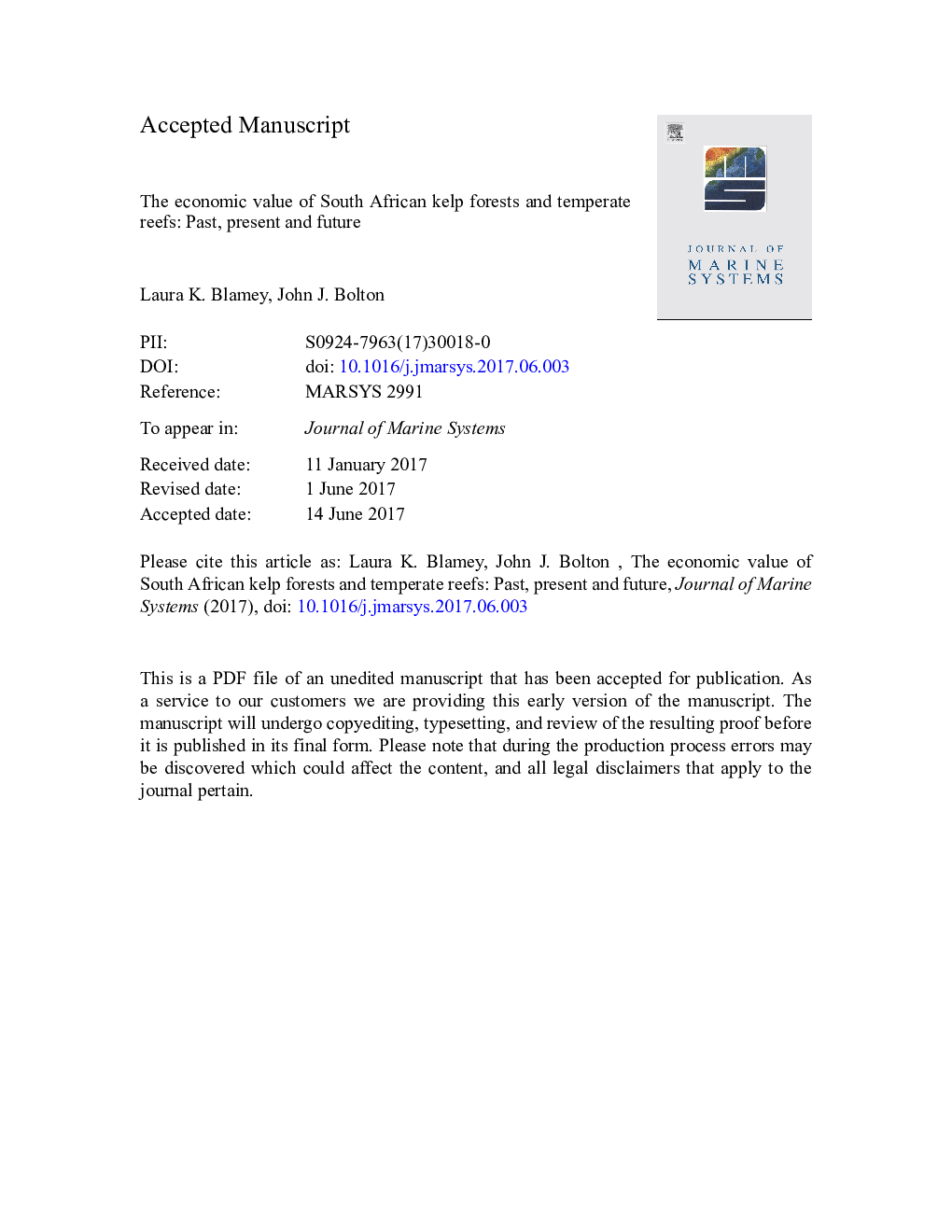| Article ID | Journal | Published Year | Pages | File Type |
|---|---|---|---|---|
| 10223883 | Journal of Marine Systems | 2018 | 44 Pages |
Abstract
In South Africa, kelp forests and associated temperate reefs dominate the nearshore subtidal zone in the southern Benguela, with kelp forests covering approximately 1000 km of the coastline. These ecosystems provide a range of goods and services that are of immense ecological, social and economic importance. A number of valuable species on these subtidal reefs are overexploited and have reached a state of crisis since the 1990s. Many linefish stocks are considered collapsed or overexploited, West Coast rock lobster populations are estimated to be at < 3% of pre-exploitable biomass and abalone are similarly overexploited, with two of the four major historical fishing grounds now closed to fishing. The current value of this ecosystem is estimated at US$ 434 million yearâ 1 (ZAR 5.8 billion yearâ 1), of which c. US$ 290 million yearâ 1 (ZAR 3.9 billion yearâ 1) contributes to the South African gross domestic product (GDP), with ecotourism contributing almost 40% of this, followed by recreational fishing (28%), and commercial and illegal fishing (c. 15-16% each). Income currently generated by fisheries is greatly reduced, with some sectors worth less than half of their value in the 1990s. Indirect ecosystem services are valued at US$ 144 million yearâ 1 (ZAR 1.9 billion yearâ 1) but aren't realised in the country's GDP as they do not provide direct economic value. Given the importance of the Benguela nearshore region to low-income coastal communities, particularly in the face of increased climate variability, striking a balance between rebuilding depleted stocks and meeting the socio-economic needs of those reliant on them will require a renewed focus on coastal research, with an emphasis on co-ordinated interdisciplinary projects.
Related Topics
Physical Sciences and Engineering
Earth and Planetary Sciences
Oceanography
Authors
Laura K. Blamey, John J. Bolton,
